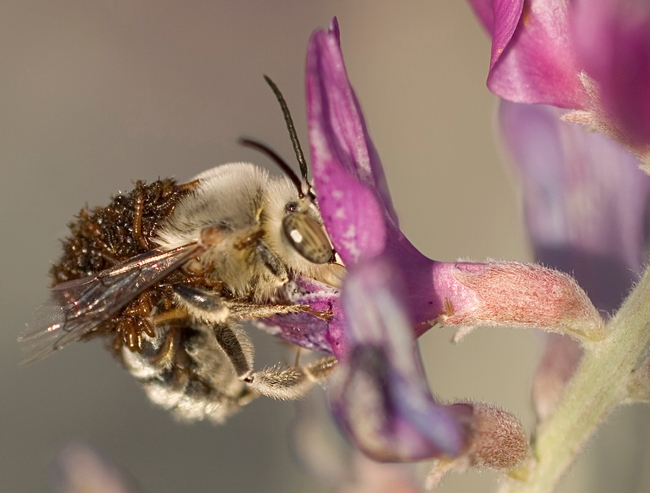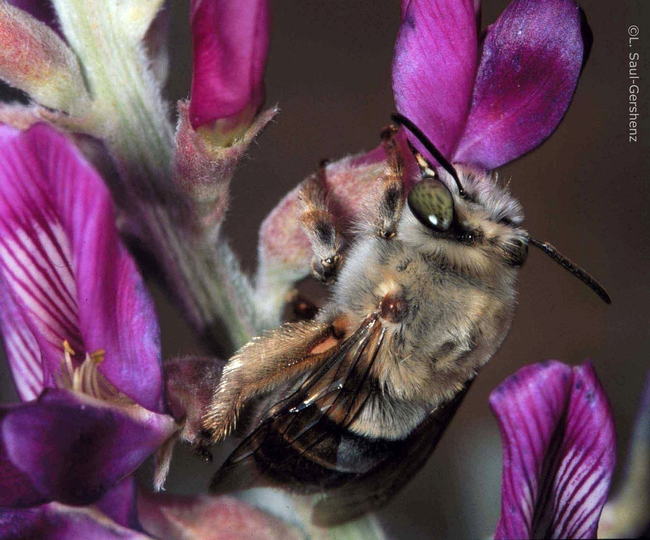- Author: Kathy Keatley Garvey

Saul-Gershenz studies how blister beetle nest parasites mimic the sex pheromone of digger bees.
Bohart associate Emma Cluff curated the wall display, “Digger Bees and Their Nest Parasites,” which examines the life cycle, research process, results, research challenges and implications.
Saul-Gershenz, associate director of research, Wild Energy Initiative, at the John Muir Institute of the Environment, UC Davis, researches the chemical ecology and parasite-host interactions of these solitary native bees and their nest parasites across the western U. S., including the coastal sand dunes of Oregon and the Mojave Desert in south-central California.
Leslie did much of her work at the Mojave National Preserve, where she tracked the solitary bee Habropoda pallida and its nest parasite, a blister beetle, Meloe franciscanus.
The larvae of the parasitic blister beetle produce a chemical signal or allomone, similar to that of a female bee's pheromone, to lure males to the larval aggregation. The larvae attach to the male bee on contact and then transfer to the female during mating. The end result: the larvae wind up in the nest of a female bee, where they eat the nest provisions and likely the host egg.
Leslie's experiments found the allomones “released by each population of M. franciscanus triungulin (larvae) mimic the pheromones released by a specific species of Habropoda bees native to their local habitat,” Cluff wrote in the display. “Leslie found that these differences had a genetic basis. She also found that local bee species were more attracted to the allomones released by their local triungulin population.”
The M. franciscanus triungulin hatching is synchronized with the emergence of adult female Habropoda bees,” the display reads. “The triungulins aggregate on plant stems and release an allomone blend which attracts male bees. The aggregation of triungulins hop on to male bees who have chosen to investigate the allomone. Once the male bees find a real female bee, they mate in a ‘mating ball' at which time the triungulins transfer to the female. All this effort is so that the triungulins can get a free ride to the nest that the female bee lays her eggs in. Once inside the nest burrow, the triungulins will feed on the net provisions and likely the egg itself and will remain there until they emerge as adults the following winter.”
Results? “Leslie's experiments found that the allomones released by each population of M. franciscanus triungulin mimic the pheromones released by a the specific species of Habropoda” Cluff wrote. “Leslie found that these differences had a genetic basis. She also found that local bee species were more attracted to the allomones released by their local triungulin population.” The research contributes to the understanding of the communication signals of bees in the genus Habropoda.
Leslie, who holds a doctorate in entomology from UC Davis, is currently finishing two research papers: the basic biology of digger bee Habropoda pallida, and the biology of the silver digger bee Habropoda miserabilis.
She and her husband, Norman, are the co-founders of the Bay Area-based SaveNature.Org. The international conservation consortium works with partners to protect ecosystems around the world.
The Bohart Museum of Entomology, directed by Lynn Kimsey, professor of entomology at UC Davis, houses a global collection of nearly eight million insect specimens. It also includes a gift shop and a live "petting zoo," which includes Madagascar hissing cockroaches, walking sticks, and tarantulas. The museum is open to the public Monday through Thursday from 9 a.m. to noon and from 1 to 5 p.m., except during the holiday schedule. (See website)
The next open house, free and family friendly, will take place from 1 to 4 p.m., Saturday, Jan. 18. It will showcase "the amazing insect work that graduate students are doing," said Tabatha Yang, education and outreach coordinator. The theme is "Time Flies When You Are Studying Insects: Cutting Edge Student Research."
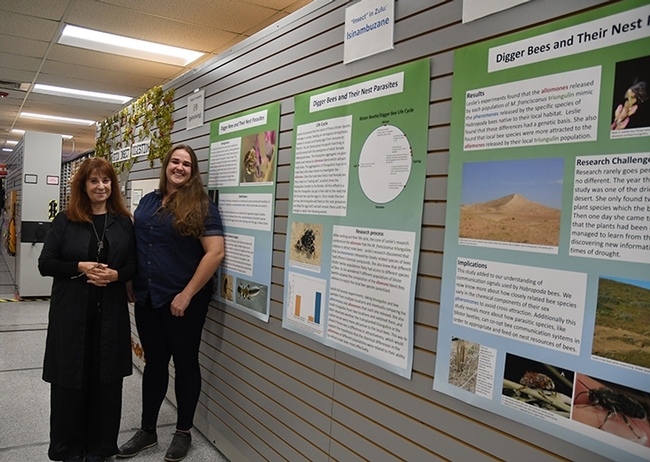
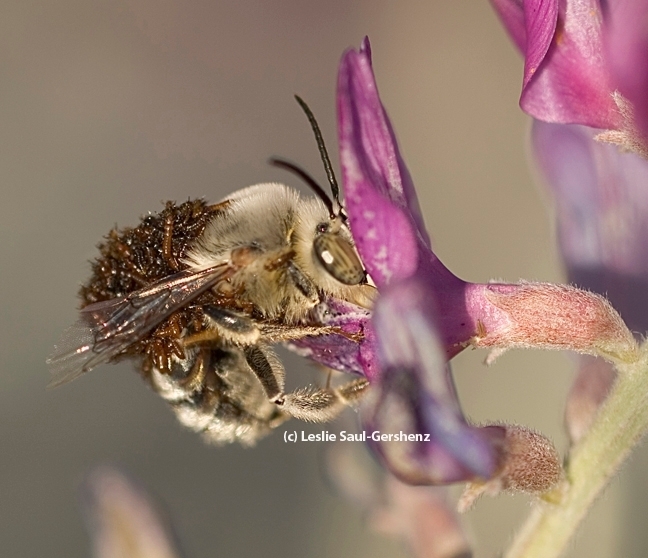
- Author: Kathy Keatley Garvey

Bees and blister beetles, yes.
We remember writing about her work in April of 2013 when she addressed the Nor Cal Entomology Society (now folded) about her research on how blister beetle nest parasites cooperate to mimic the sex pheromone of a digger bee. She had just returned from the Mojave National Preserve, tracking the solitary bee Habropoda pallida and its nest parasite, a blister beetle, Meloe franciscanus.
Fascinating research! Saul-Gershenz, who grew up in New York, studies the chemical ecology and parasite-host interactions of solitary native bees and their nest parasites across the western U. S., including the coastal sand dunes of Oregon and the Mojave Desert in south-central California.
"The solitary bee is the first native bee to emerge in the spring on the Kelso Dunes in the Mojave National Preserve," she told us. “The adult beetles emerge on the dunes in the winter months at Kelso Dunes and feed exclusively on the leaves of Astragalus lentiginosus which leafs out in January."
The bee's emergence is generally synchronized with the onset of blooms of the Borrego milkvetch, which is the sole host plant of adults of the blister beetle at Kelso Dunes.
Basically, the larvae of the parasitic blister beetle produce a chemical signal or allomone, similar to that of a female bee's pheromone to lure males to the larval aggregation. The larvae attach to the male bee on contact and then transfer to the female during mating. The end result: the larvae wind up in the nest of a female bee, where they eat the nest provisions and likely the host egg.
Leslie is now Dr. Saul-Gershenz. She received her doctorate in entomology in May 2017. And on Wednesday, Oct. 18, she will share her research at her exit seminar, "Host Range Evolution of the Bee Parasite Meloe franciscanus," set from 4:10 to 5 p.m. in 122 Briggs Hall, Kleiber Hall Drive.
"We report that different populations of M. franciscanus exhibit local adaptations that mimic both the behaviors and the chemical composition of the sex pheromones of locally available bee host species," she writes in her abstract. "We compared a population of M. franciscanus larvae, known as triungulins, parasitizing nests of Habropoda miserabilis (Hymenoptera: Apidae) from the coastal sand dunes of Oregon with a population parasitizing the congener H. pallida in the Mojave Desert in south-central California. We determined that M. franciscanus populations are the same species using molecular analyses.
Working in collaboration with the Neal Williams bee lab and the Steve Nadler molecular lab in the UC Davis Department of Entomology and Nematology, she and chemical ecologist Jocelyn Millar at UC Riverside found that multiple populations of the blister beetle Meloe franciscanus are locally adapted to different bee hosts in different allopatric populations. (Professor Williams is a pollination ecologist, and Nadler is a nematologist and chair of the department.)
The UC Davis evolutionary ecologist also explored which functional traits of hosts are useful for predicting parasite host range. In another study, she brought together a dream team of bee biologists and received funding from the Bureau of Land Management to study the impact of utility-scale solar development on desert bees. This study documented that these landscapes are biologically rich, even in drought years, and contain a minimum of 114 species of bees including six undescribed species of bee.
The significance of her work?
"Our research has added to the understanding of the communication signals of bees in the genus Habropoda," she related. "We now know that they use long-chain hydrocarbons for the female sex attractant and vary the position of the double bounds in different components and vary proportions of these components to avoid cross attraction among closely related species. Parasites co-opt this communication channel to deceive male bees in the Meloe-Habropoda system.
"In our host functional trait research we show that annual host abundance and host abundance from year to year, as well as local temporal overlap are highly predictive of host range."
Results on the impact of utility-scale solar development on desert bees showed high bee species diversity in the Mojave and western Sonoran region. "This suggests the importance of careful regional planning and additional research to protect this area of significant floral and fauna biodiversity," she said.
Future plans? To continue her research.
Leslie Saul-Gershenz, recipient of numerous grants and author of a number of publications ranging from peer-reviewed papers to books, is the co-founder of the Bay Area-based SaveNature.Org and director of Research and Conservation (1988 to present). The international conservation consortium works with partners to protect ecosystems around the world.
She is also a 2004 graduate of The Bee Course, an intensive 10-day workshop sponsored by the American Museum of Natural History at the Southwestern Research Station, Portal, Ariz. One of the instructors is Robbin Thorp, distinguished emeritus professor of entomology at UC Davis, also one of her many collaborators.
Among her other current collaborators: scientists Lynn Kimsey, Neal Williams, Tom Zavortink, Rebecca Hernandez, all of UC Davis; Terry Griswold, USDA-ARS, Bee Biology Lab; Monica Geber, Cornell University; and John Ascher, National University of Singapore.
Her next presentations of her research will be at the Entomological Society of America's annual conference, "Ignite, Inspire, Innovate," scheduled Nov. 5-8 in Denver,Colo., and the California Native Plant Society Conservation Conference, scheduled Feb. 1-3, 2018 in Los Angeles.
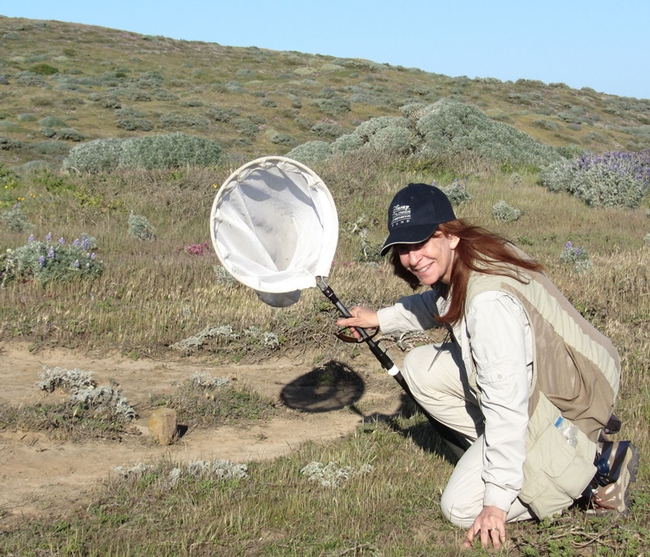
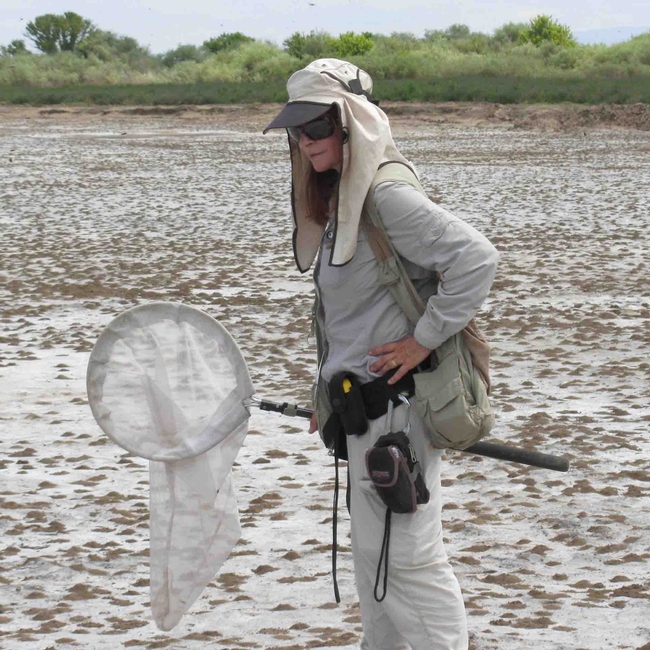
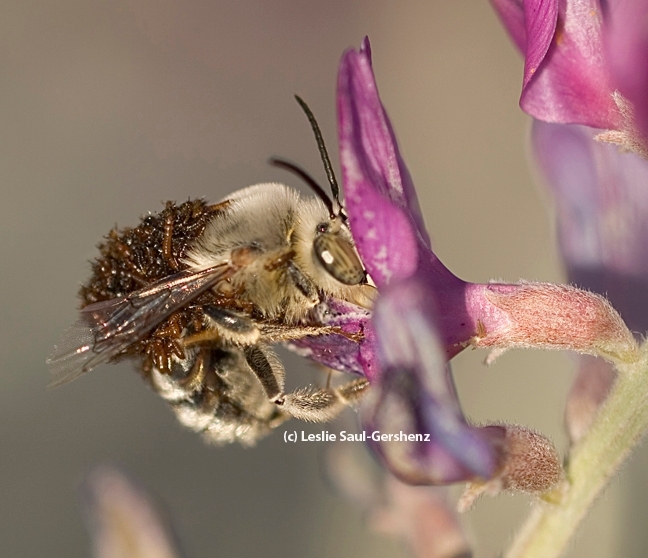
- Author: Kathy Keatley Garvey

However, there may be sad ending...more about that later.
Members and their guests will gather Nov. 7 at 9:15 a.m. at their meeting site, the Contra Costa Mosquito and Vector Control District conference room, 155 Mason Circle, Concord. for coffee and registration.
Then, at 9:30 a.m., Saul-Gershenz will discuss “Meloid Parasites of Solitary Bees." A graduate student in the Neal Williams lab, UC Davis Department of Entomology and Nematology, and a co-founder of SaveNature.Org, Saul-Gershenz researches a solitary ground-nesting bee, Habropoda pallida and its nest parasite, a blister beetle, Meloe franciscanus, found in the Mojave National Preserve.
She is the lead author of “Blister Beetle Nest Parasites Cooperate to Mimic the Sex Pheromone of the Solitary Bee Habropoda pallida (Hymenoptera: Apidae)," co-authored by professor Jocelyn G. Millar and staff research associate J. Steven McElfresh, both of UC Riverside. The Mojave National Preserve Science News published the peer-reviewed research in its April 2012 edition.
"The solitary bee is the first native bee to emerge in the spring on the Kelso Dunes in the Mojave National Preserve," said Saul-Gershenz. “The adult beetles emerge on the dunes in the winter months at Kelso Dunes and feed exclusively on the leaves of Astragalus lentiginosus, which leafs out in January."
The bee's emergence is generally synchronized with the onset of blooms of the Borrego milkvetch, which is the sole host plant of adults of the blister beetle at Kelso Dunes.
The UC Davis ecologist said the larvae of the parasitic blister beetle produce a chemical cue or a pheromone similar to that of a female solitary bee to lure males to the larval aggregation. The larvae attach to the male bee and then transfer to the female during mating. The end result: the larvae wind up in the nest of a female bee, where they eat the nest provisions and likely the host egg.
The work of Saul-Gershenz, Millar and McElfresh appears in a newly published academic book, Sensory Ecology, Behaviour, and Evolution (Oxford University Press) by Martin Stevens. Another book, pending publication in December, also will contain their work: the second edition of Pheromones and Animal Behaviour (Cambridge University) by Tristram Wyatt.
Previously, three other books summarized their research:
Keeping the Bees: Why All Bees Are at Risk and What We Can Do to Save Them by Laurence Packer and published in 2011 by HarperCollins Publishers, Ltd.
Cuticular Hydrocarbons: Biology, Biochemistry and Chemical Ecology by editors A. Bagnères-Urbany and G. Bloomquist and published in 2010 by Cambridge University Press.
The Other Insect Societies by James T. Costa, and published in 2006 by the Belknap Press of Harvard University Press.
Now, back to what may be a sad ending.
Following Saul-Gershenz' one-hour talk, the Nor Cal Entomology Society members will discuss the future of the organization, founded in 1930. Then it was known as the Northern California Entomology Club. Membership continues to be open to all interested persons, with dues at $10 a year. Currently the society meets three times a year: in Sacramento, at UC Davis, and in Concord.
Nor Cal Entomology president Robert Dowell of the California Department of Food and Agriculture will moderate the disussion.
“We have reached a critical juncture in the existence of the organization,” secretary-treasurer Eric Mussen, Extension apiculturist with the UC Davis Department of Entomology and Nematology, wrote to the members in an email. “At its beginning, the society served as the meeting place for entomologists mostly from UC Berkeley and UC Davis, as well as other members who appreciated their lively discussions of research and pest control. Representatives from industry and regulatory establishments also participated. A revolving system of society chairs was instituted and membership was good.”
“Over time, the climate has changed. UC Berkeley no longer has an entomology department or hardly any entomologists anymore,” said Mussen, who will retire from UC Davis in June 2014.
Those planning to attend to hear the talk and discuss the future of the organization should contact Mussen at ecmussen@ucdavis.edu or telephone him at (530) 753-0472 by Nov. 1. And oh, yes, there's a luncheon to be served by Kinder's Meats. Mussen is taking reservations (and payment) for that, too.

- Author: Kathy Keatley Garvey
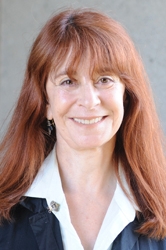
If that word is not in your everyday vocabulary, just think of a symbiotic relationship where one organism transports another organism of a different species for the benefit of both.
And there you have it--at least part of it--of what evolutionary ecologist Leslie Saul-Gershenz of the University of California, Davis, is doing.
Saul-Gershenz researches a species of digger bee, Habropoda pallida, a solitary ground-nesting bee, and its nest parasite, a blister beetle, Meloe franciscanus, found in the Mojave Desert ecosystem.
She and Neal Williams (her major professor) of UC Davis and Jocelyn Millar of UC Riverside just received a grant to study digger bee ecology and conservation. They're working with SaveNature.Org, which Saul-Gershenz co-founded.
The relationship between the bee and the blister beetle is part of it.
What's this symbiotic relationship about? The larvae of the parasitic blister beetle produce a chemical cue or a pheromone similar to that of a female solitary bee to lure males to the larval aggregation. The larvae attach to the male bee and then transfer to the female during mating. The end result: the larvae wind up in the nest of a female bee, where they eat the nest provisions and likely the host egg, Saul-Gershenz says.
Like to read more about this exciting research? Saul-Gershenz and Millar published their blister beetle/digger bee work, "Phoretic Nest Parasites Use Sexual Deception to Obtain Transport to their Host's Nest," in the Proceedings of the National Academy of Sciences (PNAS, 2006).
That led Pulitzer Prize-winning author Natalie Angier to feature their work in "The Art of Deception," published in the August 2009 edition of the National Geographic magazine. Most recently, U. S. Department of Agriculture (USDA) Forest Service entomologist Michael Ulyshen, writing for the Journal of Natural History, mentioned their work in "Bugback Riding: Transportation for the Masses" (September 2011).
Saul-Gershenz said she became interested in the subject while she was a graduate student at San Francisco State University. She wrote "Beetle Larvae Cooperate to Mimic Bees" in the journal Nature (2000).
Of her newest grant, she says: “Our preliminary data show that the blister beetle exploits four other native California bees including important pollinators in the genus Habropoda and Anthophora." Historically, M. franciscanus was known to be a nest parasite of Anthophora edwardsii distributed throughout California.
You may know Saul-Gershenz as a past president of the Pacific Coast Entomological Society. In 1991, she became the first female president in its 91-year history.
